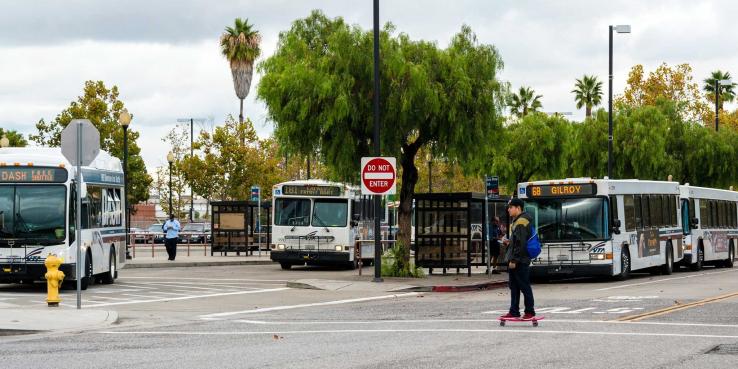Not all transit is created equal. Caltrain’s Baby Bullet express trains carry four to five times as many riders as its trains that run local service. By changing the train schedule to provide fast service to places with lots of activity during peak travel hours, Caltrain was able to more than double its overall weekday ridership.
What other kinds of changes can encourage more people to use transit more of the time? The Santa Clara Valley Transportation Authority (VTA) will be asking questions like this as it launches the Next Network, a system-wide redesign intended to grow ridership, improve its fiscal footing and serve BART, which opens at Berryessa in the fall of 2017. Earlier this month, the VTA Board of Directors took a big step toward these goals by giving the green light to design a proposal for a high-frequency bus network. It would focus 85 percent of revenue hours on routes that generate a lot of ridership, an increase of 15 percent from today’s network. Staff will draft a proposal that will be open for public comment in January and will come back to the board for a decision in April.
Implementing the Next Network will require hard choices about service priorities. Often, transit systems try to balance two priorities: “ridership” transit services that come often and carry lots of people between busy places, and “coverage” services that travel infrequently to places with few people. But as Next Network consultant Jarrett Walker puts it, having a bus network that tries to offer both ridership and coverage is like trying to turn left and turn right at the same time. It just doesn’t work. Places that are hard to serve with transit may need to be served through other solutions — and VTA should make a commitment to exploring those solutions. If decision-makers don’t get behind a high-ridership, high-frequency network, we’re never going to lower transit costs, make transit a viable option for the majority of trips and shift our region away from dependence on fossil fuels.
SPUR strongly supports the Next Network system redesign effort and has provided testimony and letters advocating for this shift. We also support the 2017 light rail redesign, which is part of this effort and was approved earlier this month.
But the devil is in the details, and there’s a lot that VTA will need to do in conjunction with the network redesign to make transit more usable. For the project to be successful, we recommend the following:
- Make transit both cost-competitive and affordable. We support studying discounted fares for youth and low-income riders. The Metropolitan Transportation Commission (MTC) is currently conducting a study of means-based fares. We recommend that VTA consult with MTC on the lessons learned in this process and ensure that there is a consistent regional solution to these problems. A new fare structure is more useful if people can use it in multiple counties and on multiple operators.
- Explore creative ways to serve the needs of people who will lose access to bus service. We agree with staff’s recommendation to keep paratransit services in areas that will lose coverage bus service. We also support researching how public-private partnerships can help, but we think VTA should first look at how its current fleet of vehicles (not just buses) can be adapted to meet unmet needs.
- Study how to better integrate fares with other transit operators in the region. This should apply particularly to neighboring transit providers and regional rail operators such as BART and Caltrain. BART is an inherently regional system, and we should be able to offer riders a seamless experience by coordinating fares for multi-operator trips.
- Create new maps that will make transit more approachable to both experienced and novice transit users alike. Part of the Next Network study will include installing new maps at light-rail stations that are affected by the network redesign. These maps should clearly show the frequency of each route. Frequency information tells people whether they can simply walk up to a stop and get on a bus or if they need to plan around the bus schedule (or perhaps take another mode of transportation).
- Don’t let revenue impacts derail the plan. VTA should study the revenue impacts of offering free or reduced price transfers between its services — but it should not be dissuaded by them. The intention is to develop a transfer system that has the greatest potential to improve the customer experience, increase ridership and support transit-oriented growth. VTA should also consider how revenue sharing systems or subsidies could be used to compensate for potential revenue loss due to fare restructuring.
For more information about Next Network, check out our blog post from earlier this spring or VTA’s website. SPUR San Jose will also host a lunchtime forum on January 17 where you can provide input on the proposed network design. Stay turned to our events calendar for more information.
